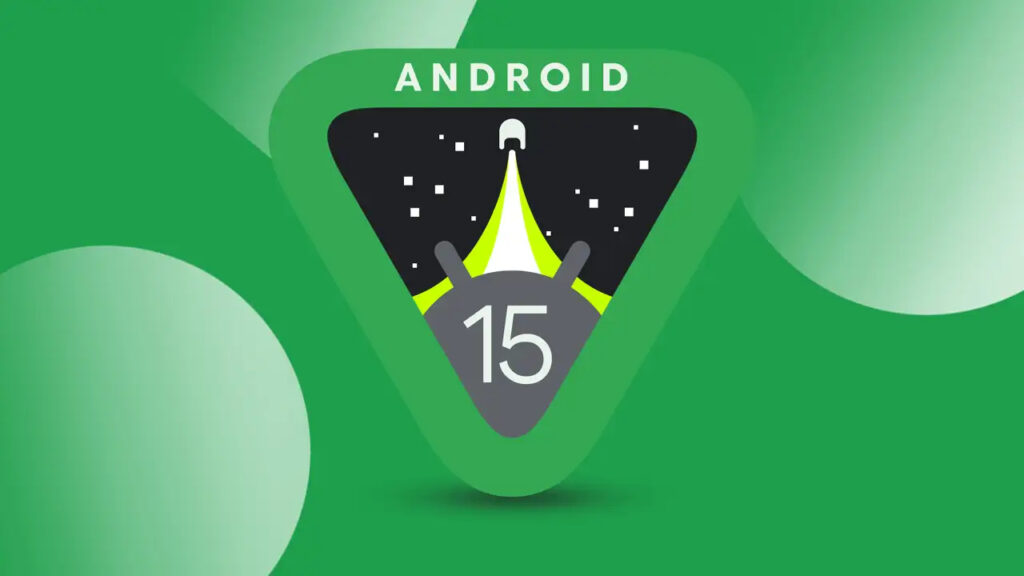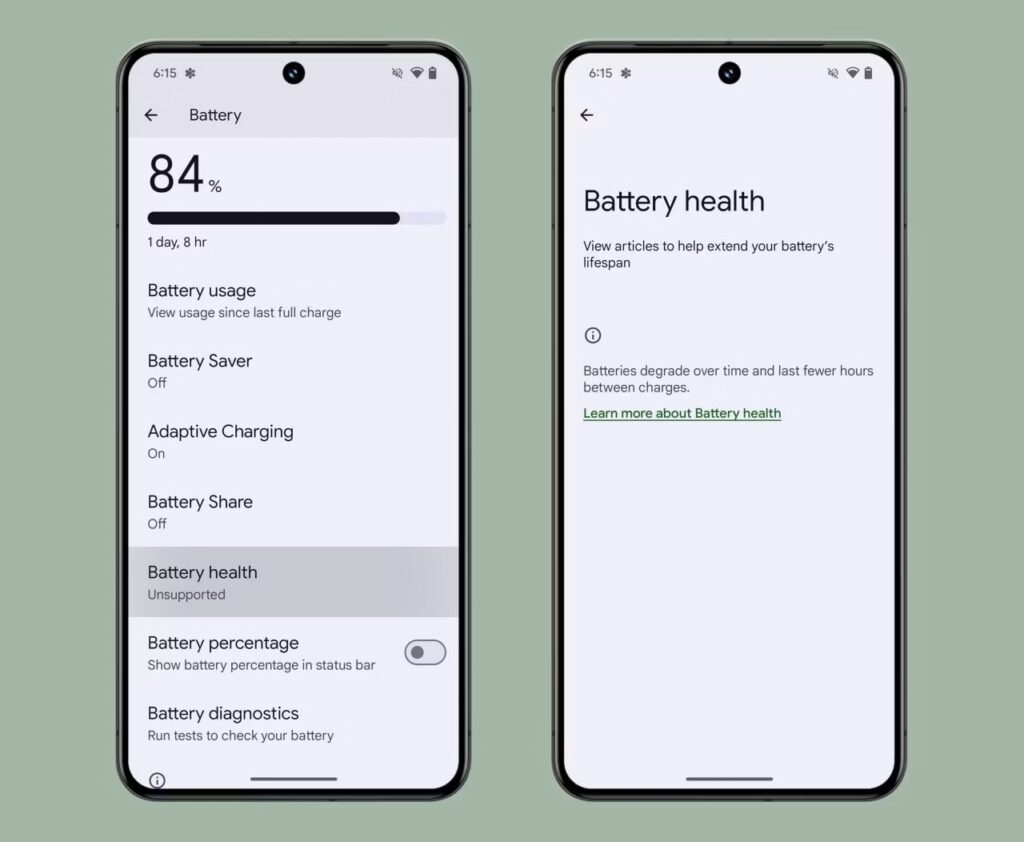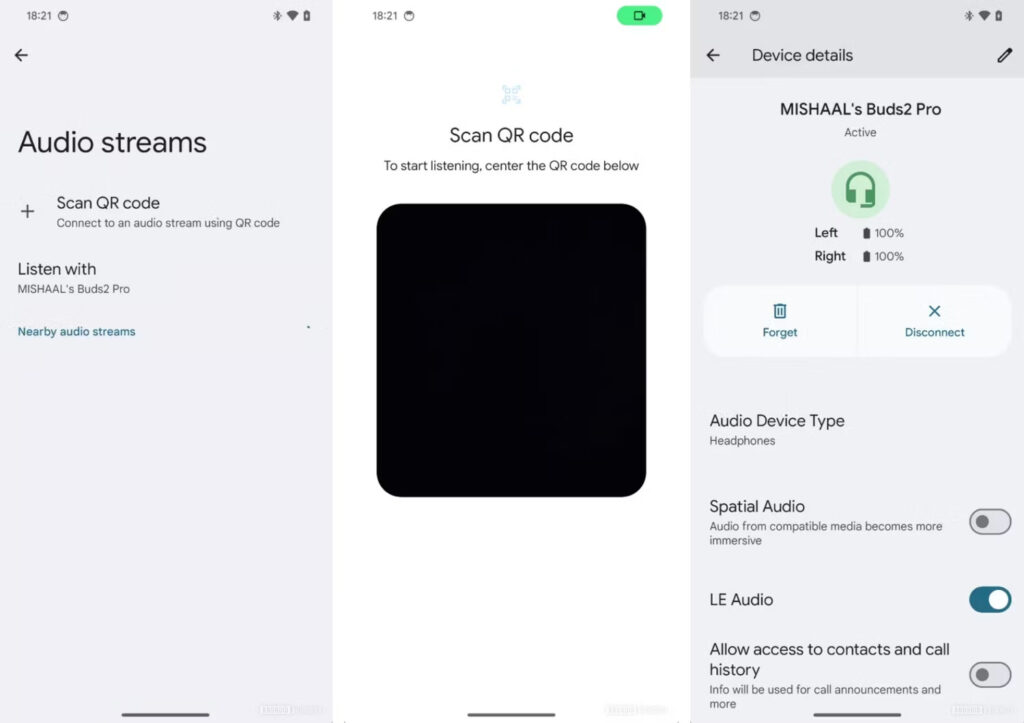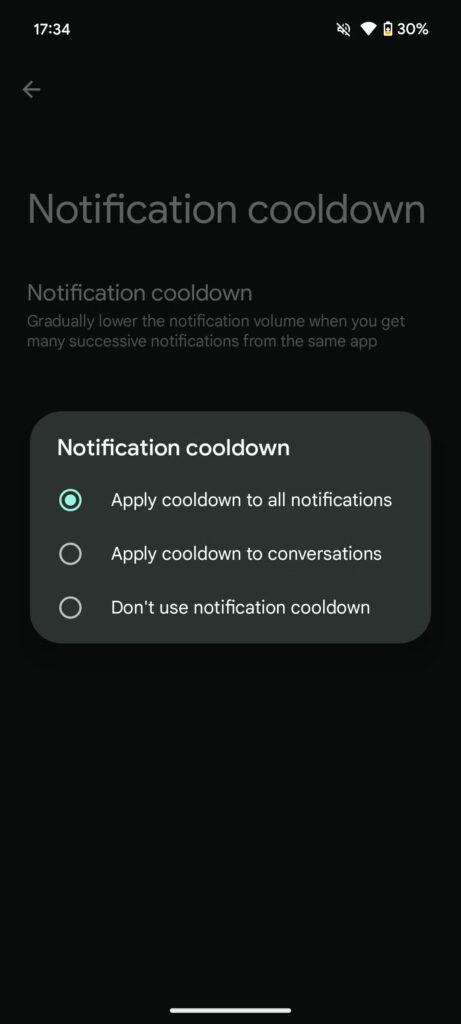
While Android 14 is currently undergoing testing as part of the QPR beta program, Google has shifted its focus to Android 15 by introducing the first developer preview. The forthcoming Android iteration is set to deliver advancements in security, performance, and camera capabilities tailored for the latest Android smartphones. However, Google likely has additional features yet to be revealed. Explore further to discover comprehensive insights into Android 15, including supported devices and glimpses of upcoming features spotted during development.
Timeline and Device Compatibility for Android 15
Google unveiled the official timeline for Android 15 concurrent with the release of its inaugural developer preview. Following the customary pattern, the OS will undergo six releases prior to achieving stability. This process comprises two developer previews in February and March, succeeded by four betas distributed between April and July. The stable release is anticipated to follow sometime after July. Historically, Android 12 and 13 debuted in August, whereas Android 14 reached all Pixel devices in October. Hence, the release window for Android 15 is expected to fall between August and October.

Regarding device support, flagship smartphones from 2023 and 2024 are likely to receive Android 15 updates at some point. Android device manufacturers have shown improvement in providing extended support for their hardware, with companies like Samsung, OnePlus, Asus, and Motorola offering update policies spanning from three to five years post-launch. Leading the charge is Google with its Pixel 8 series, ensuring full OS updates until 2030, a remarkable seven years post-launch.
During the developer preview phase, Pixel devices are exclusively granted access to Android 15. Google has confirmed that the developer preview is currently accessible for the following devices:
- Pixel 8 and 8 Pro
- Pixel 7a
- Pixel 7 and 7 Pro
- Pixel 6a
- Pixel 6 and 6 Pro
- Pixel Fold
- Pixel Tablet
The Pixel 5a with 5G is committed to receiving updates until August 2024, as guaranteed by Google. However, considering it has already received three updates, which typically marks the maximum support cycle for pre-Pixel 6 phones, it is highly unlikely to receive the Android 15 update. Since it is not part of the preview program, this further solidifies the expectation that the Pixel 5a with 5G will not be eligible for Android 15.
What’s New in the Android 15 Developer Preview 1
On Friday, February 16, 2024, Google unveiled the first glimpse of Android 15, known as Developer Preview 1 (DP1). As customary with early versions, these releases are primarily intended for developers to assess their applications and acquaint themselves with new APIs. This enables them to provide Google with early feedback regarding functionality. Consequently, significant user-facing changes are typically reserved for the initial beta releases, scheduled for April. Nevertheless, Developer Preview 1 contains intriguing elements, some of which are readily apparent to users upon installation, while others remain concealed within the codebase.
Android 15 Introduces Option to Disable Keyboard Vibrations
Previously, although you could disable haptic feedback within individual keyboard apps on Android, there wasn’t a global option to do so until the introduction of Android 15 DP1. This latest release introduces a toggle in the system settings, allowing users to universally enable or disable vibration for all keyboard applications. This feature proves especially handy for users who utilize multiple keyboard apps or wish to maintain consistent vibration settings when switching to a new one.
Android 15 Incorporates Vibration Feedback to Brightness Slider
As part of an initiative to enhance the tactile experience of the system, Google has integrated vibration feedback into the brightness slider in Android 15. This addition is characterized by its subtle yet discernible effect, showcasing the high-quality haptic motors present in Pixel devices. Such refinements contribute significantly to the overall polish of the Android interface, fostering a seamless integration between hardware and software and imparting a sense of unity to the user experience.
Android 15 Reduces Annoying Notifications with Improved Filters
Android 15 aims to address the issue of incessant notification sounds in bustling group chats with friends. Introducing a new feature called notification cooldown, the system automatically mitigates the volume of notifications when consecutive messages inundate your device from the same app. This enhancement seeks to alleviate the disruptive nature of frequent notification sounds, providing users with a more streamlined and manageable messaging experience.
Currently, the settings page for this option in Android 15 is somewhat intricate. Initially, it presents a description outlining how notification cooldown operates, requiring users to tap once more to access its settings. By default, the cooldown feature is universally applied to all apps. However, users have the flexibility to customize its behavior, opting to apply it solely to conversations or to disable it altogether.
Android 15 Introduces Allowing App Continuity Across Foldable Devices
As previously discussed earlier this month, Google initiated experimentation with a feature termed “Continue using apps on fold” within Android 14 QPR preview builds. Now, in Android 15 DP1, this functionality has been integrated into the system settings app. Users are empowered to select their preferred action when folding shut the Pixel Fold device, providing them with greater control and customization over their device’s behavior.
In Android 15, users have the flexibility to choose from several options when folding shut the Pixel Fold device. These options include continuing usage on the outer screen, swiping up to continue, or leaving the outer screen turned off entirely upon closure. The introduction of the swipe-up option in Android 15 appears to be inspired by a feature found in OnePlus Open, reflecting Google’s adoption of innovative functionalities from other platforms to enhance the user experience.
An Overview of Google’s Android 15 Announcements
Android 15 is called Vanilla Ice Cream
Google has shifted away from using internal Android code names for marketing purposes, opting for a more transparent approach to upcoming versions. Consequently, it’s been revealed that Android 15 will be dubbed Vanilla Ice Cream, following the alphabetical order set by its predecessor, Android 14 Upside Down Cake.
The choice of Vanilla Ice Cream pays homage to Android’s history, referencing the term “vanilla Android,” commonly used to denote the pure, unmodified version of the operating system. It’s anticipated that there will be jests about manufacturers’ versions of Android 15 being less “vanilla” than others. However, in reality, very few phones ship with untouched Android Open Source Project (AOSP) code these days, including Google’s own Pixel devices.
Android 15’s Icon and Visual Maintains Space-Themed Aesthetic
As per tradition, Google has refreshed the visual aesthetics accompanying the launch of Android’s latest iteration. The emblem for Android 15 is presented within a triangular frame, adorned with a distinctive green outline. At its center stands the iconic bugdroid mascot, sporting a prominent “15” emblem on its back. The bugdroid appears to gaze towards a distant destination resembling a gate positioned at the end of an extended bridge or line. Completing the imagery, a sprinkling of stars adorns the background, adding a touch of celestial allure.
Google has a tradition of embedding Easter eggs in each version of Android, accessible by tapping on the Android version number multiple times in the device settings. In Android 14, this action unveils a NASA-style badge featuring the Android mascot. However, in the recent Android 14 QPR3 beta release, the design of this badge has been altered to a triangular shape, omitting the mention of Android 14. This revision aligns with the aesthetic of the new Android 15 logo recently unveiled by Google.
Despite these adjustments, the remainder of the Easter egg remains unchanged, including the spaceship mini-game triggered by holding down the badge. It’s plausible that Google is currently in the process of revamping the Easter egg for Android 15, with the recent alteration serving as a glimpse into its ongoing development. It’s conceivable that a new mini-game may be introduced at a later stage once the redesign is complete.
Android 15 Introduces Partial Screen Sharing
Android has featured screen recording capabilities for some time, yet utilizing this function can pose privacy concerns, particularly when unintended content, such as notifications or unrelated apps, is captured. With the advent of Android 15, Google is addressing these issues by enabling users to designate a single app for recording, thereby automatically blocking notifications and content from other apps during the recording process. Notably, Pixel devices will receive this capability ahead of others, with Android 14 QPR2, scheduled for release as the March Pixel Feature Drop. This enhancement promises to provide users with greater control and privacy when capturing screen recordings on their devices.
Android 15 Enhances Camera for Improved App Integration
In previous Android iterations, Google has consistently aimed to enhance the photo and video quality when using third-party recording apps such as Instagram or Snapchat. Android 15 continues this trend, teasing improvements tailored for “supported devices.” These enhancements include the ability for developers to augment the brightness of the camera’s viewfinder in low-light conditions and access advanced flash strength adjustments.
Android 15 supports virtual MIDI 2.0 devices
Attention, musicians: Following the introduction of support for MIDI 2.0 USB devices in Android 13, Google is now shifting focus to virtualization. Google is broadening Universal MIDI Packet (UMP) support to encompass virtual MIDI apps. This expansion enables composition apps to regulate synthesizer apps akin to a virtual MIDI 2.0 device, mirroring the functionality previously available with USB MIDI 2.0 devices.
Android 15 to Receive Privacy Sandbox Enhancements
Google is actively pursuing the removal of third-party cookies from Chrome and aims to implement its new Privacy Sandbox as a comprehensive alternative across its operating systems. This initiative is presented as a more privacy-centric approach to delivering relevant and targeted advertisements to users. With the introduction of Android 15, Google elevates the Android AD Services to extension level 10, thereby enabling the incorporation of the latest revisions to the Privacy Sandbox.
Android 15 Introduces New Data Types for Health Connect
Health Connect represents Google’s endeavor to establish a standardized storage and sharing solution for health data across Android applications. With the introduction of Android 15, the platform integrates several new features previously introduced in Android 14 extensions 10. These enhancements enable the incorporation of additional data types spanning fitness, nutrition, and other related categories, thereby enhancing the capabilities of Health Connect.
Android 15 Enhances File Integrity Management
Android’s FileIntegrity Manager receives several new APIs, enabling apps to encrypt data using custom cryptographic signatures. This enhancement ensures the integrity of data, safeguarding against corruption or tampering and providing added protection against malware and unauthorized access.
Android 15: Improvements in Performance and Battery Life
As with each annual release, Google incorporates several performance and battery life improvements into the new Android iteration. Developers can now employ a new power-efficiency mode for background tasks, signaling to the system that these tasks do not require significant power consumption. Additionally, Google facilitates easier interaction for developers of demanding applications like games with power and thermal systems. This enhancement aims to enable more direct optimization of workloads and mitigate the likelihood of full-scale thermal throttling.
Android 15: Everything we know So far
Return of Lock Screen Widgets with Android 15
Once upon a time, Android included support for displaying widgets on the lock screen. However, this feature seemed to wane in importance for the company after its introduction in Android 4.2 Jelly Bean. Subsequently, it was left largely untouched in subsequent releases until its complete removal in Android 5 Lollipop, several years later. Fast forward to a decade after Lollipop’s release, Android 15 may herald a revival of this functionality. Android expert Mishaal Rahman discovered a new “communal space” feature in an in-development Android 14 build. This feature introduces a new section to the lock screen where users can populate it with a variety of supported widgets.
The feature is evidently in its nascent stages of development, as it remains concealed behind flags and exhibits a buggy interface. Furthermore, the onboarding process appears to be unconventional and imperfect, suggesting that it’s unlikely to persist in the stable release. Mishaal Rahman theorizes that Google may reserve lock screen widgets for tablets and other multi-user devices. Code restrictions imply limitations on adding widgets that display sensitive private data, potentially restricted to those suitable for public viewing.
Android 15 May Introduce App Pair Saving Functionality
As Android phones continue to increase in size, and foldable devices like the Google Pixel Fold facilitate multitasking with multiple apps displayed side by side, Android 15 may introduce a feature enabling users to save these app pairs directly to their home screens for convenient access. While some manufacturers already provide similar functionalities on their foldable devices, Google aims to integrate this option directly into the Android operating system. Although indications of app pairs were observed in Android 14, it’s anticipated that this feature may be fully realized in Android 15.
Android 15 May Introduce Easy Mode for Enhanced Accessibility

In the realm of increasingly intricate and powerful smartphones, not everyone desires or is capable of utilizing every aspect of their device. Recognizing this, a potential solution dubbed “easy pre-set” has been uncovered by Mishaal Rahman within the Android 14 QPR3 beta. Although not currently active, a newly introduced settings pane, along with accompanying descriptions, indicates its purpose: to enhance user accessibility by boldening text, increasing contrast, enlarging icons, and eliminating wallpapers to simplify the Android user experience.
Android 15 May Introduce Native App Archiving
The Google Play Store recently unveiled a feature that automatically archives infrequently used apps when storage space is limited. However, due to Android’s open ecosystem, apps installed from alternative app stores are unable to utilize this functionality. With Android 15, Mishaal Rahman has uncovered indications that app archiving could potentially be integrated directly into the operating system, thereby extending its benefits to all apps regardless of installation source. Additionally, users may gain more manual control over app archiving, although this aspect remains unconfirmed at present.
Android 15 May Require Apps to Render Content Edge-to-Edge
Since the introduction of full gesture navigation with Android 10, apps have had the option to draw content edge-to-edge. This functionality allows content to extend beneath the navigation bar, similar to the iPhone, resulting in a more immersive viewing experience and reclaiming additional screen real estate.

After four years, numerous apps have yet to adopt this feature, but with Android 15, mandatory edge-to-edge drawing may be on the horizon. As observed by Mishaal Rahman in the code, Google appears poised to make this viewing experience the default, potentially requiring all apps targeting Android 15 to implement it.
Android 15 Could Introduce a Private Space for Sensitive Apps
Samsung has long provided a feature called Secure Folder, designed to segregate sensitive apps from the main system and necessitate additional authentication. Recently, it has been observed that Google is developing a similar feature for Android, referred to as Private Space. This functionality introduces an additional profile linked to the primary phone user, akin to the work profile. Private Space requires additional authentication and automatically suspends apps and notifications when inactive. Google may also offer the option to conceal Private Space, rendering it accessible solely through searching for “private space” in the launcher.
Android 15 May Provide Enhanced Battery Health Information

In Android 14, Google introduced basic battery health information through an API that third-party apps can utilize. This includes a cycle count, accessible within the About phone section under Battery information. Android 15 is anticipated to enhance this functionality by providing more comprehensive battery data and facilitating easier access to these details. In the upcoming release, battery information is expected to be relocated to the Battery system settings section, housed within a new battery health menu. Users should be able to view the cycle count alongside a battery health percentage, indicating the extent of battery degradation compared to its original condition.
Android 15 May Introduce Bluetooth Pop-up Dialog Feature

Currently, when tapping the Internet toggle on Pixel phones, users can access a small menu to make important adjustments. However, the same functionality isn’t available for the Bluetooth quick settings button, which functions solely as an on-and-off switch unless tapped and held. This setup is less than ideal for individuals who commonly keep Bluetooth enabled for devices like smartwatches and fitness trackers.
It appears that Google aims to address this issue by introducing an Internet-style pop-up menu for Bluetooth. This feature would enable users to quickly connect and disconnect from individual devices without needing to navigate to the system settings. The development of a new quick settings tile for this purpose was observed in Android 14 QPR2, suggesting it may be incorporated into the OS prior to the Android 15 update.
Android 15 May Enhance Bluetooth Connectivity
Bluetooth LE Audio represents the next significant advancement in wireless audio technology, catering to wireless earbuds, hearing aids, and various other audio devices. This new standard offers substantially reduced energy consumption while maintaining comparable audio quality. Additionally, Bluetooth LE Audio enables seamless connection of multiple Bluetooth receivers to a single source, akin to Wi-Fi functionality. Despite the standard being available for some time, the industry is gradually transitioning towards devices that support it.

Android 15 could facilitate the transition. Google is developing a built-in feature for initiating and joining Bluetooth Auracast sessions, enabling connections to multiple Bluetooth devices. This functionality will allow users to start their own sessions or join others’ sessions directly from Android’s settings page.
Android 15 May Include Built-in Phishing Protection
The Google Play Store and Play Protect work diligently to filter out most deceptive and fraudulent apps, but some still manage to evade detection. In response, Android 15 may introduce enhanced phishing detection capabilities. As observed in Android 14 QPR2, a new Play Protect feature could analyze app activity for signs of phishing or other deceptive behavior. If any suspicious activity is detected, this information is relayed to Play Protect to verify the threat and issue warnings to other Android users. While initially spotted in Android 14 QPR2, this feature may be released before the launch of Android 15.
Android 15 May Decouple NFC Updates from System Updates
Over the years, Android has become more modular, with many core features outsourced into mainline modules. This approach enables Google to update components without requiring a full system update, bringing new features to phones that may not receive regular updates and allowing for faster patching of security issues.
Bluetooth, Wi-Fi, and ultra-wideband have already been decoupled from system updates, enabling independent updates for these connectivity standards. It’s logical for Google to extend this approach to another connectivity standard like NFC. As noted by Android expert Mishaal Rahman in changes to the Android Open Source Project (AOSP) code, Google is planning to restructure NFC components into a mainline module. This move aligns with the trend of modularizing core features, allowing for more flexible updates and enhancements to NFC functionality.
Android 15 Developer Preview Released
With the arrival of the first Android 15 developer preview, we anticipate uncovering numerous additional features throughout the weekend. Stay tuned for updates, and if you’re feeling adventurous, consider installing Android 15 DP1 on your Pixel device. However, bear in mind that it may lack stability, so it’s advisable to proceed only if you have a backup device for regular use.




















